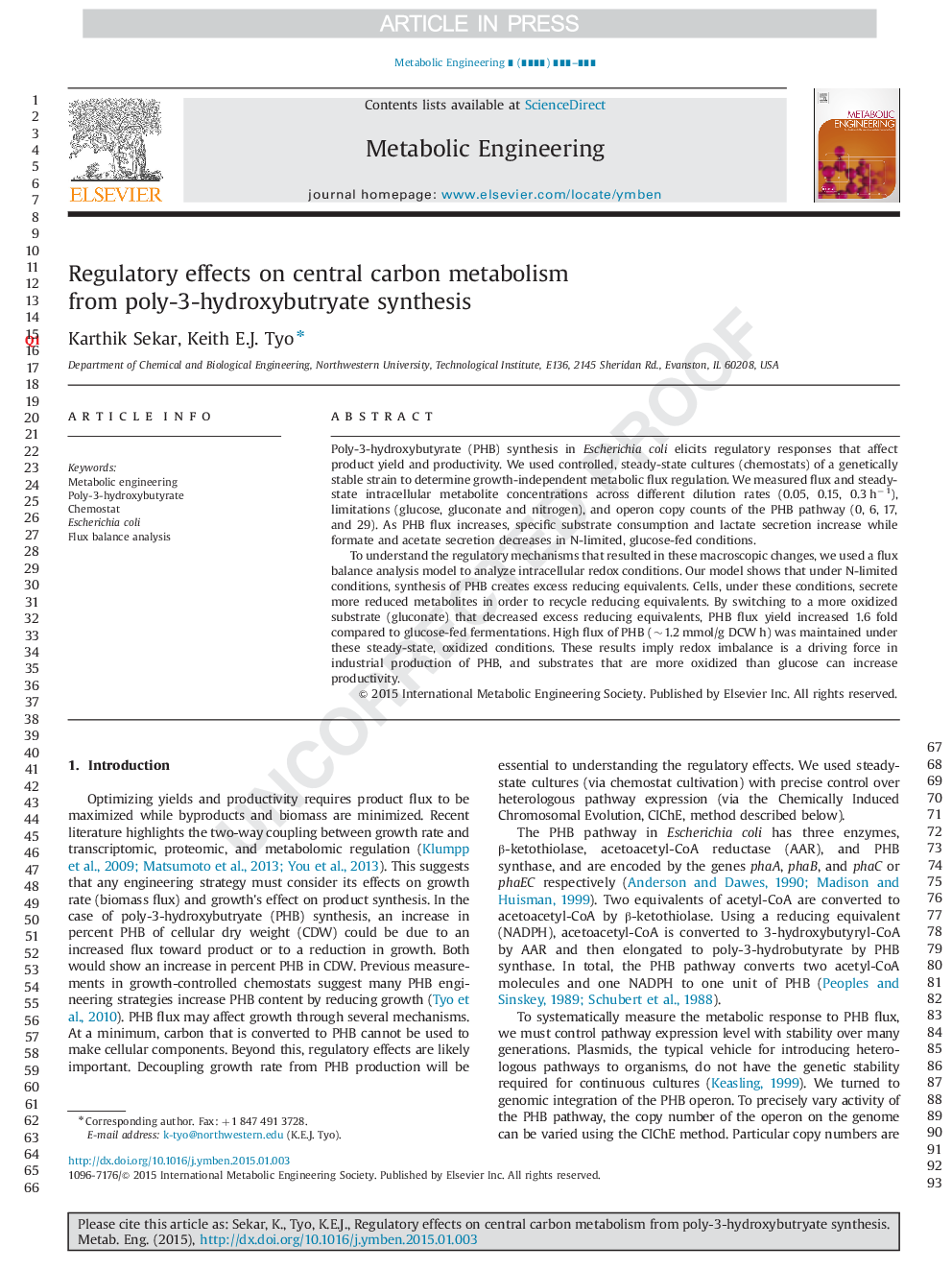| Article ID | Journal | Published Year | Pages | File Type |
|---|---|---|---|---|
| 6494476 | Metabolic Engineering | 2015 | 10 Pages |
Abstract
To understand the regulatory mechanisms that resulted in these macroscopic changes, we used a flux balance analysis model to analyze intracellular redox conditions. Our model shows that under N-limited conditions, synthesis of PHB creates excess reducing equivalents. Cells, under these conditions, secrete more reduced metabolites in order to recycle reducing equivalents. By switching to a more oxidized substrate (gluconate) that decreased excess reducing equivalents, PHB flux yield increased 1.6 fold compared to glucose-fed fermentations. High flux of PHB (~1.2Â mmol/g DCWÂ h) was maintained under these steady-state, oxidized conditions. These results imply redox imbalance is a driving force in industrial production of PHB, and substrates that are more oxidized than glucose can increase productivity.
Related Topics
Physical Sciences and Engineering
Chemical Engineering
Bioengineering
Authors
Karthik Sekar, Keith E.J. Tyo,
